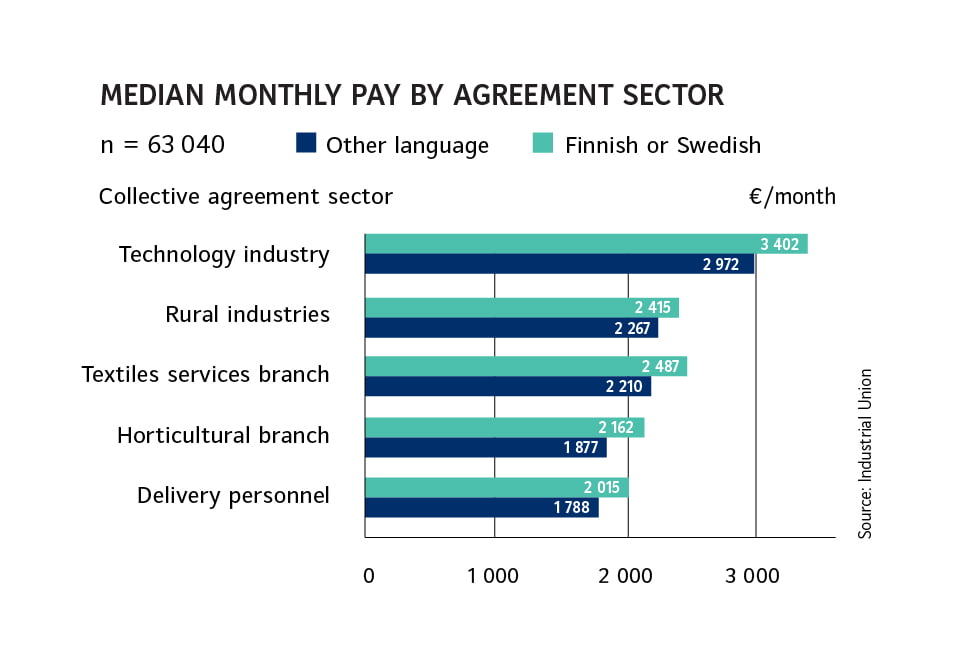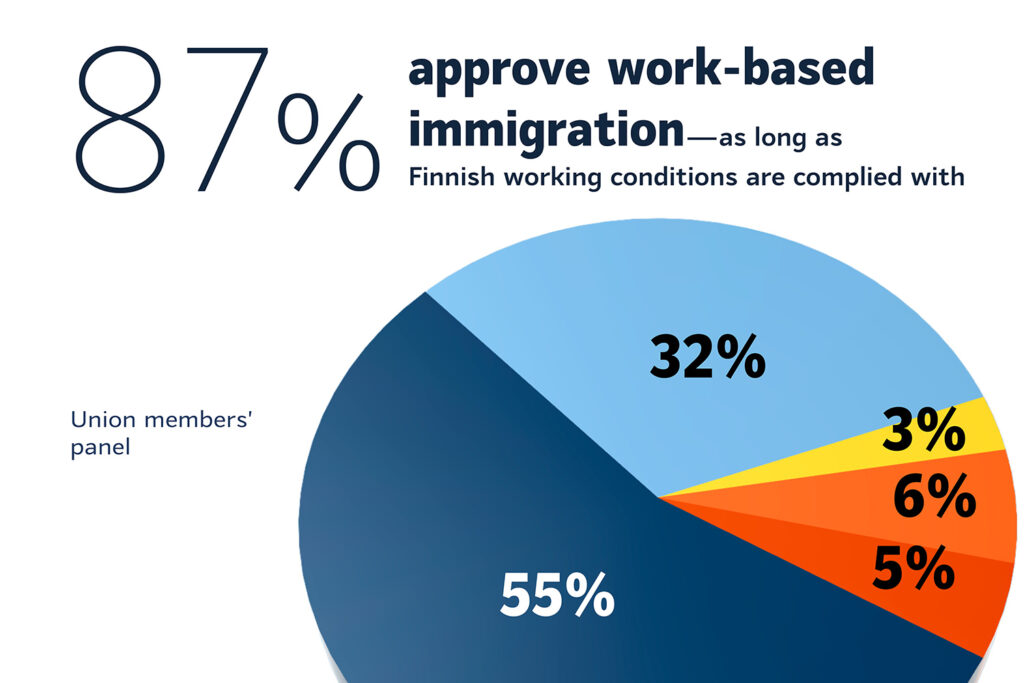For foreign-language members, a euro is 83 cents – monthly salary 2,800 euros
The average earnings of Industrial Union members whose language is other than Finnish or Swedish are lower in all collective agreement sectors, according to estimates by the union’s Research Unit.
A part of the Industrial Union’s members speak a language other than Finnish or Swedish. The largest employer in this group is the metal industry, while the agriculture and horticulture industries have the highest number of non-Finnish and non-Swedish members relative to the total number employed by these sectors. Of the collective agreement sectors represented by the Industrial Union, agriculture and forestry industries are considered low-wage industries with mostly seasonal work. Other industries with low wages include newspaper delivery and textile care, where most employees work part-time.
The monthly earnings of foreign-language members are clearly lower than those of Finnish and Swedish speaking members. Statistics show that the average earnings of foreign-language members are lower in all agreement sectors.
The employment rate of immigrants has increased and is approaching the level of those with a Finnish background.
According to the Industrial Union’s Research Unit, the median monthly salary for foreign-language members is around 2,800 euros. This is about 570 euros less per month than what Finnish and Swedish speaking members receive. Based on these figures, the euro of foreign-language members is just 83 cents on average.
According to a report by the Ministry of Economic Affairs and Employment (2024), the employment rate of immigrants has increased and is approaching the level of those with a Finnish background, but their earnings are lagging behind. The average earnings of persons who have lived in Finland for at least ten years as EU citizens or with a student residence permit are about 80% of the average earnings of persons of Finnish background. The average earnings of persons arriving on the basis of international protection or family reunion are clearly lower (50%).
The education and skills immigrants have obtained in their home country is often not directly suitable for similar tasks in Finland. In addition, not all who have just moved to the country are fluent in Finnish or Swedish. For these reasons, immigrants are forced to either start their own business or work in low-pay industries that require little training.
Employment rate growing among immigrants
In recent years, a large number of working-age people of foreign background have joined the Finnish labour market. During the record year 2023, nearly 58,500 people immigrated to Finland. As of the end of 2022, one in ten (9.2%) of people in employment had a foreign background. According to Statistics Finland, work-based immigration is the reason why the country’s employment rate has remained high.
In an article published in Tieto & Trendit (2023), Pekka Myrskylä examines Finland’s population as a whole. The employment rate of people of foreign background is the same as the national average, with 43% in gainful employment. The most significant difference is in the number of pensioners. More than one in four (28%) people of Finnish background are pensioners, compared to just 6% of those of foreign background.
Sidestepping of needs testing an issue
Some foreign employees come to Finland as EU citizens. They are required to register their employment in Finland within three months.
Workers coming from outside the EU are subject to stricter monitoring by the authorities. The needs testing of immigration is carried out by region and profession twice a year. Needs testing is exclusive to blue-collar professions.
The purpose of needs testing is to prevent a situation where replacement workforce is brought into the country. The fear is that the wages and other terms of employment of the workers that are replaced in this way are eroded. Jobs in a region should therefore be primarily offered to unemployed people in the industry.




